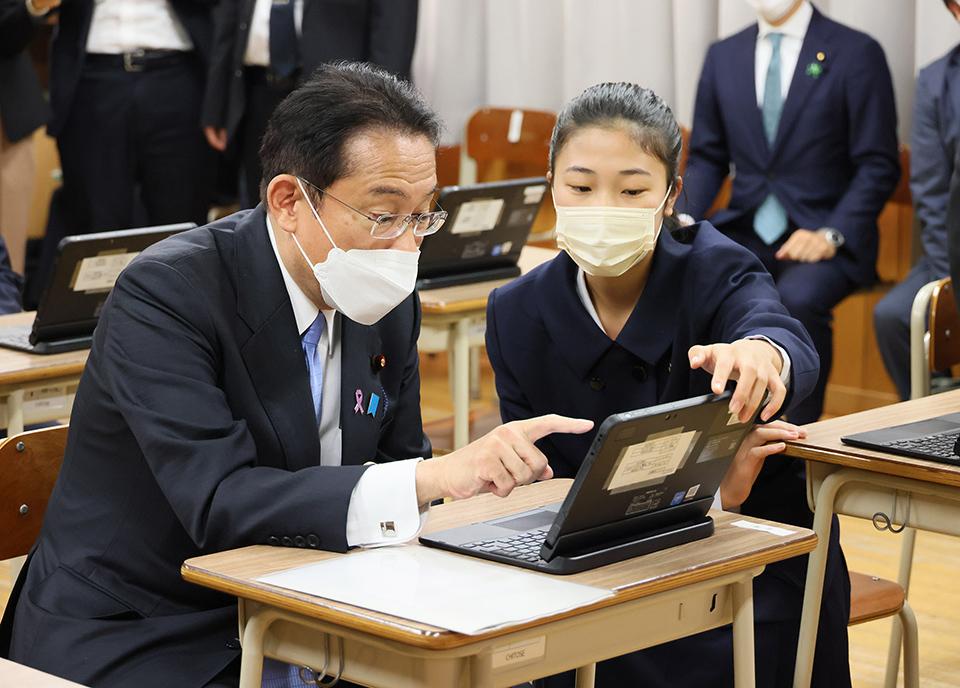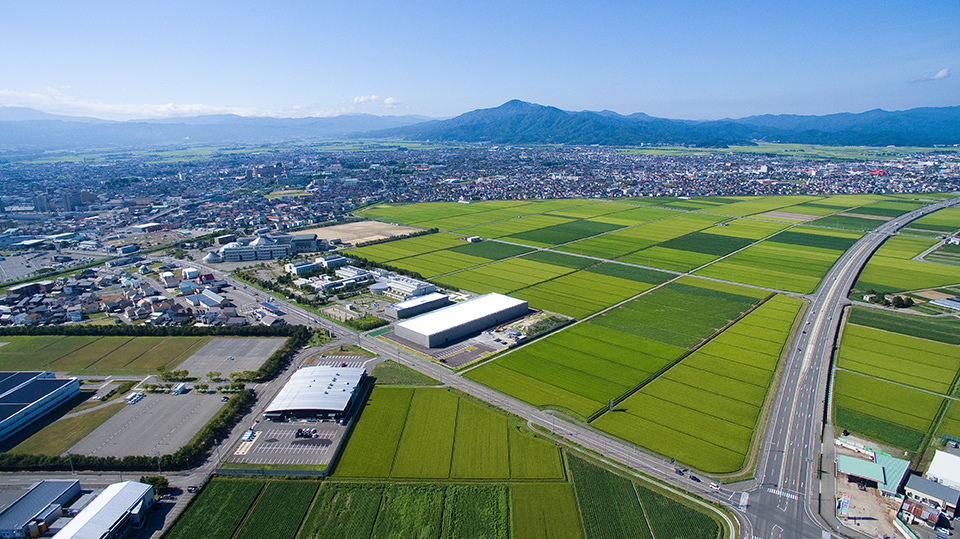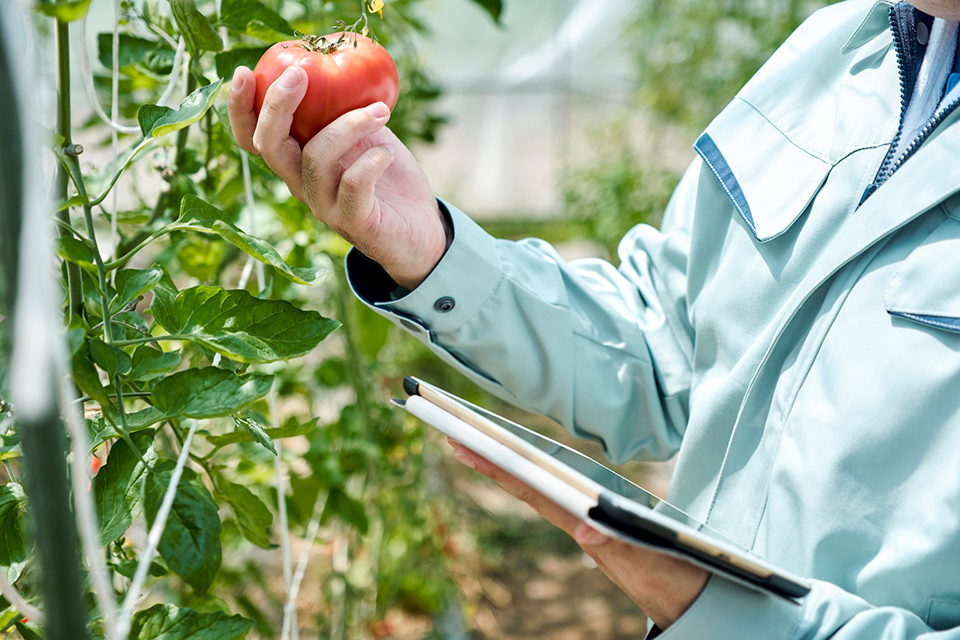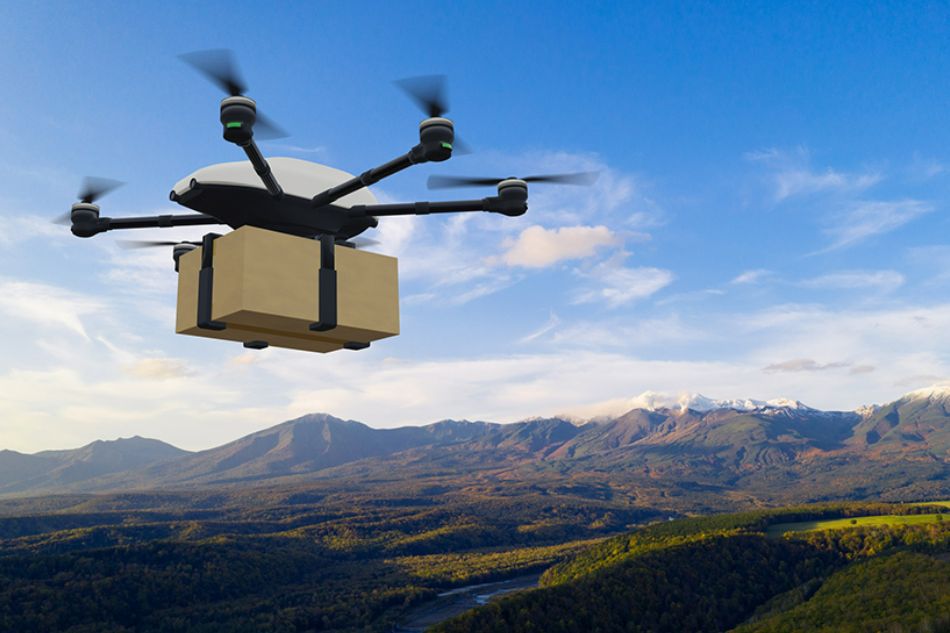DECEMBER 28, 2021

In November 2021, Prime Minister Kishida visited Ehime Prefectural Matsuyama Higashi High School to inspect a class making use of ICT.
To maintain future prosperity in the outlying regions of Japan and to encourage many people around the world to gain a deeper understanding of and connection with the country’s rural areas, Prime Minister Kishida has put forward his Vision for a Digital Garden City Nation, which aims to achieve rural-urban digital integration and transformation.
The vision focuses on four broad initiatives, as follows:
I. Building digital infrastructure


The Tsuruoka Science Park, located among the beautiful rural scenery surrounding Tsuruoka City in Yamagata Prefecture in northern Honshu, is home to research institutes and venture companies that continue to create innovative technologies.
The first is the building of digital infrastructure that stretches to every corner of the country, comprising the following four goals: 1. The completion, in roughly three years, of a digital superhighway using submarine cables surrounding the islands of Japan; 2. The building of more than a dozen regional data centers in about five years; 3. Making optical fiber a universal service by 2030, with 99.9% coverage of households, and; 4. Achieving 5G coverage for 90% of the Japanese population by the end of fiscal 2023 (March 31, 2024). With those objectives completed, it will be possible to use high-speed, large-capacity digital services anywhere in Japan.
II. Developing and securing human resources with digital skills

The second initiative is the development and securing of tech-savvy human resources. Aiming at the acquisition of powerful digital skills on the part of university students and those receiving vocational training, etc., the initiative will establish a program to annually train 450,000 personnel to be responsible for the promotion of digitalization in local regions, by the end of fiscal 2024 (March 31, 2025), reaching a total of 2.3 million by 2026.
III. Implementing digital services to solve rural issues

The third initiative builds on the first two initiatives to provide new digital services. For example, the following goals will be being worked towards: 1. Realizing an agriculture sector by 2025 in which almost all farmers in the country will practice “smart agriculture” with advanced technology—including AI, robots, and IoT—for improved efficiency and productivity in the face of labor shortages due to an aging population; 2. Implementing new mobility service initiatives across about 40% of local governments nationwide, such as setting up mobile clinics to eliminate medical disparities among regions; 3. Achieving digital transformation at approximately 70% of all logistics companies, including the use of drones and automated delivery robots, by fiscal 2025 (ending March 31, 2026); 4. Providing an educational ICT environment that is fair and optimized individually for each child, by distributing a digital device to each student attending school. The aim is to let children from diverse backgrounds further develop their qualities and abilities without anyone being left behind; 5. Working on revitalizing the country’s outlying regions through digital technologies, by carrying out such actions as promoting remote work at some 60% of all local public organizations so as to create a flow of people and work, and; 6. Utilizing digital tools to connect local small and medium-sized enterprises with overseas businesses, so as to introduce the advantages of Japanese products more widely and deeply.

Digital technology is being introduced into Japanese agriculture to improve the efficiency of farm work and the quality of products.

The imminent use of drones to deliver packages to depopulated areas is highly anticipated.
IV. Initiatives to leave no one behind

The fourth initiative will, in addition to the previous three initiatives, establish a human-resource support system to promote and realize a digital society where no one is left behind and where everyone can enjoy the benefits of digital technologies regardless of his or her age, gender, or geographical location, among other characteristics. The system will begin in fiscal 2022 (i.e., from April 2022), with more than 10,000 digitalization supporters nationwide, and will be enlarged as time goes on.
The above four initiatives, using digital technology, will realize new rural environments nationwide that are both convenient and attractive while maintaining their prosperity, and will revitalize Japan as a whole through the bottom-up growth emanating from such areas.































